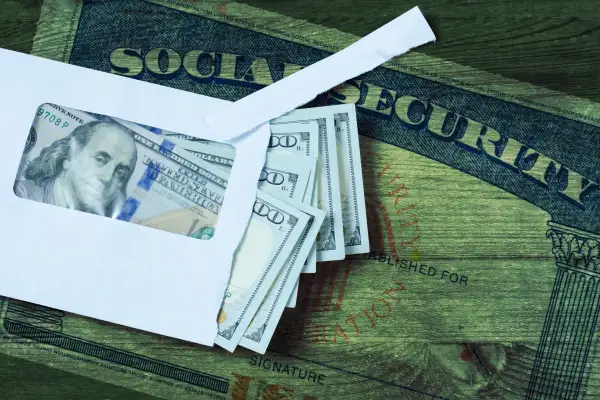Social Security Recipients Could Get an 8.9% Raise Next Year

Social Security recipients are likely to get the biggest boost to their monthly checks since 1981.
Social Security monthly payments are expected to increase by 8.9% next year, according to a new estimate of the 2023 cost-of-living adjustment (COLA) by The Senior Citizens League (TSCL), a nonprofit advocacy group.
Current Social Security recipients are making do with the 5.9% COLA for 2022. Before that, the increase was a paltry 1.6%. An 8.9% increase would be the biggest since 1981, and the fourth highest ever since Congress instituted automatic COLAs in 1975.
The likely massive increase in Social Security benefits would be a direct response to sky-high inflation, which is also hitting levels not seen in over four decades. In March, the inflation rate surged to 8.5%, the highest level since December 1981, the Labor Department reported Tuesday. The increase was in large part due to the soaring costs of gas, groceries and vehicles.
“This year is an anomaly,” says Mary Johnson, a Social Security analyst at TSCL and the researcher behind the organization's latest COLA prediction. "We haven't seen anything like this in 40 years."
Before Tuesday’s inflation report, TSCL had previously projected a 7.6% cost-of-living increase for next year. If the payments are increased even higher, it would be a welcomed reprieve for the tens of millions of Americans who rely on Social Security benefits.
The Social Security Administration will announce the COLA in October, reflecting the most recent inflation numbers, and the increased payments would take effect in January 2023.
How Social Security COLA increases are calculated
While Social Security benefits are tied to inflation, they are actually based on a slightly different metric than the “headline inflation rate” of 8.5%, which the Labor Department calls the Consumer Price Index for All Urban Consumers (CPI-U).
Instead, Social Security benefits are calculated using the CPI for Urban Wage Earners and Clerical Workers (CPI-W). The Labor Department says this estimate provides a better picture of “blue-collar” consumers, aka lower- and middle-income earners.
Inflation affects these groups of people differently, and as a result, the CPI-W inflation rate is currently higher. In March, the Labor Department says consumer prices rose for that cohort of people by 9.4%. This is the rate Johnson used to predict the new COLA.
The anticipated 8.9% boost would help more than just retirees. Social Security benefits also include Social Security Disability Insurance (SSDI) and Supplemental Security Income (SSI), two vital programs that aid people with disabilities.
Altogether, more than 70 million Americans would stand to gain from increased Social Security payments.
Why Social Security benefits need to rise
However big, the upcoming COLA increase might be too little, too late.
“People are trying to live on a 5.9% COLA during the same period when inflation is actually 9.4%,” Johnson says.
In other words, inflation is already weighing on people’s wallets right now, and the increased Social Security benefits wouldn’t hit bank accounts until January 2023.
“Inflation affects savings because retirees have to take more out,” Johnson says. “It can also affect if they have money invested in fixed income accounts” such as bonds and certificates of deposit (CDs).
And even that is sort of a best-case scenario. Johnson shared data from a new survey from TSCL that found that approximately 45% of Social Security beneficiaries have no retirement savings.
Of those who did have savings, 21% said they depleted a retirement or savings account entirely over the last 12 months.
“Retirees can take a beating during a tough economic period,“ Johnson says, “and may never really recover.”
More from Money:
How 'I Bonds' Can Rescue Your Savings from Inflation
3 Easy Ways to Start Saving for Your Retirement in 2022
How Big Should Your 'Rainy Day' Savings Account Actually Be?

